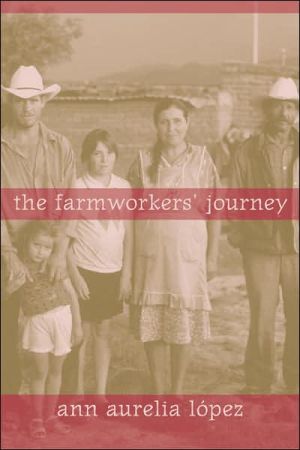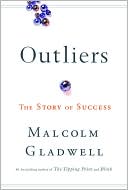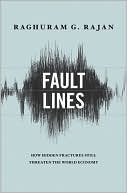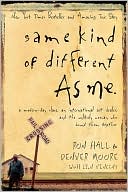The Farmworkers' Journey
Illuminating the dark side of economic globalization, this book gives a rare insider's view of the migrant farmworkers' circuit that stretches from the west-central Mexico country-side to central California. Ann Aurelia Lopez deftly weaves the voices of farmworkers and their families together with up-to-date research to portray a world of inescapable poverty hidden from most Americans.\ About the Author:\ Ann Aurelia Lopez is Research Associate with the Center for Agroecology and Sustainable...
Search in google:
"In The Farmworkers' Journey, Ann Lopez provides a very readable account of the human instinct for survival associated with placing agriculture products on the tables of U.S. residents. Her years of scholarly research conducted living among farmworker families provides a firsthand account of the trials, tribulations, health and social relationships of people that keep them forever attached to the soil in both the U.S. and Mexico. Her revelation of how agribusiness is subsidized by the sacrifices of farmworker families should substantially moderate the hysterical voices that mitigate the reasoning needed to address the undocumented issue as behooves a democracy."—J. V. Martinez, federal government executive, and a founder of the Society for the Advancement of Chicanos and Native Americans in Science (SACNAS)"This book tells a powerful and moving story of lives affected by agricultural and trade policies, migration, and the dehumanization of farm workers. The text is an eye-opening blend of academic research and testimonials of the people directly touched by the powerful market forces that have been unleashed by trade liberalization. Lopez brings together different analytical dimensions that are normally treated separately, moving through these dimensions with an ease indicative of her extraordinary talent and expertise."—Alejandro Nadal, Science, Technology and Development Program, El Colegio de México
The Farmworkers' Journey\ \ By Ann Aurelia López \ University of California Press\ Copyright © 2007 The Regents of the University of California\ All right reserved.\ ISBN: 978-0-520-25073-4 \ \ \ \ Preface\ This book grew out of a deep passion I have been experiencing for many years. It began as I read local newspaper articles and editorials about renewed farmworker abuse that often referred to farmworkers in an objectified manner, as if they were inanimate implements of their central valley California corporate agribusiness employers' capital-intensive commercial farming processes. \ Although I have no personal history of farmwork in California or elsewhere, this objectification struck a cord of intense dissonance. I viewed the dehumanized references as an affront to any fundamental rational perception of what it means to be a human being. The abuses portrayed were an insult to any standards of tolerable decency and civility. No one in a democracy should be devalued and objectified in this way.\ As the articles appeared week after week, my indignation continued to grow. I recall discussing farmworker issues with a class of environmental science students during a lecture about food and agriculture. I questioned students about the appropriateness of the farmworker subjugation and objectification I had read about. Later, I realized that the energy of indignation I experienced must be harnessed andutilized constructively to improve the circumstances of California's farmworkers. My solid commitment to assist farmworkers was born. The newly established Ph.D. program in environmental studies at the University of California, Santa Cruz, provided the avenue by which my all-encompassing task of study and work with farmworkers began.\ The binational ethnographic farm-to-farm research summarized in this book derives from almost ten years of collecting data at each end of the migrant circuit between west-central Mexico and Watsonville and Salinas, California. The data collection consisted of extensive interviews with thirty-three farmworkers and their family members in Watsonville and Salinas. I also studied twenty-two subsistence and small producer farms and farm families at the other end of the migrant circuit in west-central Mexico. There, during summer and winter research trips, I learned about the central California farm labor force's farms and families as well as the post-NAFTA effects on the rural Mexican countryside.\ The research was time consuming and required great patience and intuitive skill. It is the product of countless hours of participant observation in the form of home visits and social and school involvement-often exhausting and at times even perilous. Farmland in west-central Mexico is subject to unregulated agrochemical spraying in the summer. Avoiding agrochemical exposure and toxic vehicle emissions in some regions is nearly impossible.\ The ubiquitous poverty in the region combined with compromised sanitation standards has created a paradigm of familiar hunger and illness in the west-central Mexico countryside. Along with the many viral and bacterial species that plague farm families, serious illnesses also mar the countryside: cholera, dengue fever, malaria, and even several strains of hepatitis. In spite of exercising extreme caution in food and beverage choices and preparation, my research assistants and I found it nearly impossible to complete an entire trip without becoming ill.\ I was also not prepared for the heavy emotional load I would have to bear as I listened to often tragic, almost inconceivable stories and witnessed equally tragic life circumstances. Almost from the moment this study began, interactions with farmworkers have often left me awash in an ocean of contrasting emotions, ranging from joy at life successes to deep sadness and anger at the nearly inescapable vicelike grip of poverty most Mexican subsistence farmers and California farmworkers are caught in. The disparity between the comparatively wealthy insulated lives of Californians living in Santa Cruz and the often dangerous, life-threatening, impoverished lives of Mexican farmworkers hidden from public view only 14 miles away in Watsonville motivated me to question local and state government commitment to human rights issues, work safety standards, and democracy in general.\ Over time, as an ethnographer I came to enjoy widespread trust (confianza) in both the California farmworker community and rural Mexico. I believe that my ethnicity, maturity, gender, openness, and passion for the work contributed to the high level of trust I experience. Study participants on both sides of the border openly discussed their undocumented status and the mechanisms used to evade the Border Patrol, as well as other sensitive life issues and experiences.\ I always made my research purposes clear at the outset of all interviews. I informed each participant that I was undertaking the study ultimately to improve the circumstances they faced in their lives. I also emphasized the value of their input. All individuals with whom I spoke were happy to know that what they told me might be used to improve the binational well-being of their families. I believe that some farmworkers valued my work, and me, and were so willing to divulge rich ethnographic data because participation in the study rekindled long-lost hopes for a better future for themselves and their family members.\ I recall asking Florencio Gómez, a farmworker in the Buena Vista migrant camp in Watsonville, why I was so well received in the community. He responded, "That's easy! You're open and down-to-earth." The openness exchanged with farmworkers in California and farmers in Mexico fostered the revelation of deeper personal internal realms that went beyond the confines of structured interview questions. I found that almost every individual interviewed in both California and Mexico retained a reservoir of grief just beneath the surface of a stoic or otherwise pleasant exterior countenance. When the well was tapped, I found myself identifying with the pain of the study participants and emotionally sharing in the harsh realities of their existence.\ Some individuals in both California and Mexico were not trusting. On three occasions I arrived for a prearranged interview with a farmworker in Watsonville only to find that he or she was not home when I arrived or that an "emergency" had arisen that required their immediate attention. Attempts to arrange another meeting were dismissed or deemed impossible due to lack of time.\ Fortunately, those who distrusted me as an outsider were the exception rather than the rule. With the passage of time, trust and relationships with farmworkers and Mexican farm families have deepened. I feel privileged to continue to be so welcome as a visitor in the homes of farm families on both sides of the border. Farmers, farmworkers, and their families in California and Mexico touched my heart in the deepest way, establishing a life-long connection of friendship and respect. I feel compelled to tell their story. This publication is one step in a continuing lifetime of research, commitment to, and involvement with California farmworkers and their farm families in rural west-central Mexico. I have written all stories and voices exactly as participants in this study expressed them. I use pseudonyms for all farmworker and Mexican farm family members in order to protect their identity.\ While engaged in this research, I was able to initiate a variety of community projects to bridge the chasm between the lives of those who live in "mainstream" U.S. society and those who live as farmworkers or farmers in Mexico. In 1999 a Santa Clara, California, Brownie troop prepared small bags of toys and other gifts for each child in all twenty-two families I visited during the 1999 holiday season. My research assistant and I distributed the toys and enjoyed the true meaning of the season through the delight expressed by each child.\ In December 1999 I arranged for San José City College students to send 554 pounds of donated clothes and toys to Guadalajara, Jalisco, for distribution to families in villages associated with Cuquio, Jalisco. For Christmas 2001 I organized a "farmworker Christmas" with donations to eighteen of the poorest farmworker families in Watsonville and Salinas; these included a jacket or coat for each family member, clothes, toys, and a visit from a Spanish-speaking Santa Claus.\ From May 2000 to November 2001, I developed and taught a preschool science program for the preschool-age children of migrant farmworkers at the Buena Vista migrant camp. I donated science materials from the San José City College biology department to the camp preschool, including rock and mineral collections, astronomy and ecology posters, aquariums, microscopes, and preserved invertebrate samples. In October 2002 I made a presentation to Pajaro Union School District preschool teachers on effective strategies for science instruction to Latino preschool children.\ In 2001 I arranged for the donation of forty surplus computers from the San José Community College District to the Buena Vista migrant camp. The Pajaro Valley School District then created a computer lab at the camp staffed with bilingual technicians and instructors for evening farmworker computer instruction.\ In 2002 the regional director of the St. Vincent de Paul organization gave me permission to regularly provide bags of free clothing and toys to farmworker families in Salinas and Watsonville. Hundreds of pounds of free clothing, toys, and household items have been provided to families in both areas. In October 2002 I was able to purchase computers and printers with donations for three farmworker families with high-achieving high school students in Watsonville and Salinas.\ In 2003 I arranged for a traditional Michoacán meal with a migrant family for a touring church group from Seattle, Washington. Participants in the event were so moved by their experiences with the farmworker family and those who told their stories to the group that they sent a dozen boxes of athletic equipment to the children at the camp after returning to Seattle. In summer 2005 another meal was provided for the San José Human Agenda group, the director of Human Relations in San José, the Mexican consulate, two UC Santa Cruz professors, and apprentices at the UC Santa Cruz Agroecology Center.\ In summer 2006, the Human Agenda group returned with guest legislators for a meal. Thirty members of the American Civil Liberties Union visited the camp for a meal later that summer, and UC Santa Cruz farm apprentices visited the camp that September.\ Farmworker Christmas has become tradition in my family, with family members donating hundreds of dollars and gifts for California farmworkers each year. In addition, ten children in one of the poorest families I found in Jalisco now have education sponsors in the United States. Several women at a local Felton exercise club, who know of my work, provided the funds for a year of educational expenses for all the children in the family. They are committed to continuing support until the children receive their degrees and are able to find jobs and move out of their impoverished circumstances.\ Finally, I am working with a group of equally passionate, interested people to form a non-profit Farm Worker Family Foundation. We have established a website (see Epilogue) and will provide interested individuals with opportunities to participate in projects and make donations designed to improve working and living conditions as well as educational opportunities for binational farm families.\ I continue to visit farm families in Mexico every six months and to maintain contact with farmworker family participants in both Watsonville and Salinas. It is my desire and hope that the perspective and information garnered from this project serve to enlighten future immigration and agricultural labor policymakers and to dispel many of the nativist myths and folktales about Mexican immigrants currently in vogue in California and the rest of the nation. In addition, I feel that a "farm to farm" understanding of the human side of migration from west-central Mexico can ultimately serve as a nexus for the development of more enlightened international immigration and trade policy.\ This book is organized in such a way that readers can follow and experience the real life circumstances, including human rights abuses, that individuals face all along the binational migrant circuit. I explore the many binational practices, institutions, and laws that promote and maintain the media objectification and subjugation of Mexican farmworkers. Farmworkers are caught up in this binational framework of social, political, and economic institutions and practices, and escape is nearly impossible.\ The final two chapters of the book are devoted to a brief review of the most oppressive institutions on both sides of the border. The human rights violations inherent in this framework at each juncture of the migrant circuit are itemized and summarized with specific examples from the text.\ Chapter 1 presents an overview of the unprecedented displacement of human beings and the high immigration rates currently taking place worldwide.\ As an antecedent to addressing the causal factors contributing to this massive human displacement and immigration phenomenon, chapter 2 provides an overview of Mexico's historical sustainable farming practices. All participants in the research on both sides of the border claimed that these sustainable practices provided the foundation for the westcentral Mexico campesino farming culture for their own families and for generations of their ancestors. Harvests were consistently abundant, and families were united in their family, farming, and community activities. Furthermore, family members were woven into the ecology of the surrounding landscape, ultimately providing an ecologically sustainable lifestyle for millions of Mexico's rural inhabitants.\ In chapter 3 I provide a brief overview of Mexico's agricultural political economy. I present four modern developments that are principal factors contributing to the disintegration and ultimate demise of the west-central Mexico sustainable rural campesino culture: the 1940s introduction of so-called Green Revolution technologies; the overturning of Article 27 of the Mexican Constitution, which privatized the ejido lands in preparation for the North American Free Trade Agreement (NAFTA); NAFTA itself; and corporate penetration. Ultimately, as a result of NAFTA's impact on the Mexican economy and particularly on the lives of subsistence and small producer corn farmers, hundreds of thousands of Mexican farmers have been forced to flee from their families and land in search of work elsewhere in Mexico and the United States.\ In chapters 4 and 5 I discuss the perceived, though unwelcome, alternative to starvation in the Mexican countryside: migration out of Mexico. I address the many factors contributing to subsistence and small producer corn farmers' decision to migrate and the impact this decision has on family members. I also relate several of the more poignant actual immigration experiences of study participants and their family members. Finally, I examine current U.S. immigration policy and its effect on those arriving from Mexico, as well as their family members back home.\ Chapter 6 provides a brief history of California's unique corporate agribusiness. Of particular interest is the extent of corporate agribusiness's generation of wealth and prosperity. I chronicle the history and development of California's industrialized farms from the time of California statehood in 1848 and conclude by examining the recent trend toward land and production consolidation. Unlike smaller farms of the U.S. midwest managed by family members and occasional hired help, California's industrial agriculture has always been dependent upon a hired labor force to manage the huge tracts of consolidated land. I review the historical processes of ethnic succession and wage depression that have occurred over the past several decades along with agricultural labor laws that are designed to protect growers while leaving farmworkers with few rights. The chapter concludes with a summary of farm labor attempts to organize, culminating in farm labor's brief episode of victories in the 1960s under Cesar Chavez's United Farm Workers.\ Chapter 7 introduces the central California Mexican farm labor force and illustrates the contrasting roles farmers from Mexico experience as they negotiate the transition from farmer with access to land in Mexico to farm laborer in California. Once employment is initially secured, farmworkers engage in a characteristic sequential process of job migration, propelled by job dissatisfaction from one employment situation to another.\ The large growers who supply the most benefits and incentives to workers institute an appeasement process that serves to minimize unrest and promote an established loyal labor force that is unlikely to either unionize or strike during the harvest season. The chapter concludes with a discussion of the exploitative working conditions encountered by farmworkers and their abysmally low wages. Most farmworkers work without contracts, legal protections, or a living wage.\ The consequences of overwork, low wages, and occupational hazards are the subject of chapter 8. Though they work in a land of prosperity and wealth generation, farmworkers and their children remain impoverished and pay a grave price in compromised mental and physical health. Few have the health insurance necessary to seek medical intervention and remediation.\ Chapter 9 addresses the mechanisms by which California farmworkers and their families survive as the poorest of America's working poor. Farmworker housing, extended households, the problems of solitary men, children's education, the impact of overwork on family life, gangs, and family separation resulting from binational life are considered. The chapter concludes with a discussion of the geographic post-NAFTA spread of HIV/AIDS from California to the west-central Mexico countryside, where pre-NAFTA cases of HIV/AIDS were almost unknown.\ In chapter 10 we return to the west-central Mexico countryside to observe the impact of mass emigration on rural towns and villages. Many once-vital centers of community activity and commerce have become ghost towns. The majority are home to the elderly and their grandchildren; the working adults are in the United States. Abandoned and depressed women are a norm in the countryside, and everywhere the impact of environmental destruction in its many forms mars the once-pristine countryside.\ Fractured families and farming communities no longer function as stewards of Mexico's rich and genetically diverse corn. Without the necessary labor force to carry them out, sustainable intercrop farming practices have been abandoned, resulting in genetic erosion throughout the Mexican countryside. Concomitantly, corporate high-yielding hybrid varieties and genetically modified corn imported from the United States are replacing traditional strains of corn, further exacerbating the loss of genetic diversity.\ As cultural and environmental disintegration and death slip through the Mexican countryside, primarily U.S.-originating transnational corporations are enjoying an economic boom and soaring profits by promoting deadly environment-, health-, and culture-destroying drugs, chemicals, and agricultural products. Chapter 11 provides examples of the health-damaging consequences of abandoning the cultivation of traditional strains of corn and replacing them with high-yielding hybrid and genetically modified corn. Additionally, the chapter summarizes the dependence of the Green Revolution's high-yielding corn strains on a variety of agrochemicals and the impact of these chemicals on both human health and the environment of Mexico.\ Chapter 12 summarizes the danger Mexican farmers face when they use deadly agrochemicals, often with little information regarding the product's toxicity, with poorly functioning equipment, and without proper clothing and protection. The impact of imported agrochemicals on the lives of adults and children in the countryside is summarized with graphic, specific ethnographic examples. The chapter concludes with a discussion of the traditional Mexican campesino diet and the impacts Coca-Cola Company, PepsiCo, and Marlboro's aggressive campaigns to sell their health-compromising products to the rural poor of Mexico have had on consumption patterns.\ Chapter 13 addresses some of the institutional mechanisms that oppress Mexican farmers and their families in Mexico, including the Mexican government and the legacy of the Partido Revolucionario Institucional, the federal military presence in the countryside, the Catholic Church, the inaccessibility of education, intermediarios (middle men), caciques, and machismo.\ Chapter 14 summarizes the dense, interlocking, co-reinforcing framework of social, political, and economic institutions and practices that extends binationally from the rural west-central Mexico countryside to central California's corporate agribusiness. The human rights violations that are inherent at every juncture of the binational migrant circuit are highlighted with examples summarized from the preceding chapters. The chapter concludes with proactive steps each country and its citizenry can take to ameliorate the deplorable circumstances the binational farmworker community finds itself in.\ Finally, the Epilogue relates some of what has been accomplished thus far on behalf of farmworkers, and the work that remains. It includes specific steps that informed consumers can take to promote the well-being of the binational farmworker population, upon which California's entire agricultural economy is dependent.\ Berkeley, California August 2006\ (Continues...)\ \ \ \ \ Excerpted from The Farmworkers' Journey by Ann Aurelia López Copyright © 2007 by The Regents of the University of California. Excerpted by permission.\ All rights reserved. No part of this excerpt may be reproduced or reprinted without permission in writing from the publisher.\ Excerpts are provided by Dial-A-Book Inc. solely for the personal use of visitors to this web site. \ \
List of Illustrations ixPreface xiAcknowledgments xxiThe Farmworkers' Journey 1Mexico's Historical Farming Practices 11Aspects of Mexico's Agricultural Political Economy 28Migration Northward to Central California 43Immigration Experiences 64California's Corporate Agribusiness 88Farmworkers in Central California's Corporate Agribusiness 107An Impoverished, Endangered, and Overworked People in the Land of Plenty 126Farmworker Household Survival in Central California 146Meanwhile, Back on the Farm 166Transnational Corporations and the U.S. Legacy in West-Central Mexico 189Endangered Mexican Farmers 215Institutional Oppression in the West-Central Mexico Countryside 240Toward an Enlightened Perception of California's Mexican Agricultural Immigrants 257Epilogue 272Agrochemical Inventories and Classifications 279The Universal Declaration of Human Rights 285References 293Index 325








